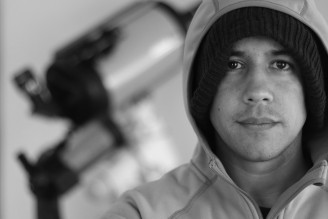When I moved to Byron Bay, I didn’t even own a telescope. When I started becoming interested in astrophotography and started sharing my photos around I realised I have something I have in my backyard that the vast majority of people don’t. A dark sky. Every year encroaching development globally removes our access to space with light pollution, and most people don’t even notice.
Byron is growing, but historically the town has been anti-development and pro-environment. These two factors alone would be reason enough to make the case for space based tourism in the region, but it goes further than that. Let me explain the many reasons Byron is Australias – or perhaps the Southern Hemispheres – ideal region for the space dollar.
Dark Skies
Not only are our skies relatively dark on the outskirts of town, but neighbouring towns and cities are far enough away that their light pollution is but a distant glow on the horizon.
Southern Skies
Visitors from the northern hemisphere have never seen the things we can see here. The biggest nebulas, the biggest galaxies, the biggest clusters. Famed astronomer Bart Bok is on record saying “The Southern Hemisphere holds all the good stuff.”
Low Impact
Setting up an observatory or dark sky park is extremely low impact on the environment or the local town. Such a site would be on the outskirts, but draw visitors to local accommodation. There isn’t a single dark sky park registered in Australia, and all that’s required is a dark sky and the ability for astronomers to use the park at night for imaging and observing.
Carbon Neutrality
Byron Bay wants to be the first carbon neutral town in Australia. I submit that this target, with current innovations in waste management and renewable energy could be met overnight, if the local government enforced private energy companies to turn out the streetlights for much of the town after midnight, when massive amounts of power are wasted for no reason.
Geographic Location
Being on the Easternmost point of Australia means we see the first sunset and sunrise on the continent. It means zero light pollution to the east and clear unobstructed views. Everything we see in space rises from the east because of the Earths rotation. Byron’s latitude -28 degrees from the close equator matches NASA in Florida at 28 degrees. This makes it an ideal viewing location for planets, the sun and the moon but without the heat and tropical weather actually being on or closer to the equator would bring.
Surf Weather is Space Weather
The ideal conditions for going to the beach are also the ideal conditions for space observation – clear skies and minimal wind. If surf tourism works here, then space tourism is already confirmed to be compatible with our climate.
Pictured : Photos taken from the authors backyard in Byron Bay. (Click for larger images – may take a while to load!)
Winter Tourism
Unlike surfing and beach tourism, space tourism is actually better in winter. The cool nights bring still, clear conditions and what astrophotographers call the “Milky Way Season” when the brightest part of the milky way is overhead, filled with visually incredible things to observe through a telescope.
Demographics
Space tourists, according to google insights, are typically middle-aged to older men with families and money to spend on equipment. They are the antithesis of the high-impact, cash-poor school graduates and festival goers who drink heavily and leave our town often in a state of complete disarray.
Infrastructure
Byron has power, accommodation, internet, food, proximity to airports, hospitals and everything you’d find in a big city. Most astronomical destinations are far from any of this which means Byron is in a rare class of town that has dark skies and access to modern amenities.
Culture
Arguably Byrons greatest export – our open minded, cosmic culture. A magnet for hippies and healers, speakers, academics, environmentalists and highly regarded global citizens, the exploration of the heavens is an ideal facet of our already beautiful community consciousness. We once used to slaughter whales, fell old growth forests and even sell the very sand we now seek to protect. Those days are long gone, and there are more stars in the sky that there is sand on our beaches.
What Now?
A private investor could setup a public observatory, but not without the commitment of local government to keep light pollution at current levels or reduce it further. Development in West Byron and Ewingsdale is yet to make it’s inevitable impact on the local light emissions. Apart from this, selecting and registering an International Dark Sky Park (IDSP) registered with the International Dark-Sky Association (IDA) would put Byron on the map as the first IDSP in the Southern Hemisphere. Close to Brisbane and the Gold Coast as well, it would be a destination for domestic and international space tourists alike.
 |
Dylan O’Donnell is a Byron Bay resident and astrophotographer whose work has been featured by NASA, ESA and media worldwide. He is part of Team Celestron promoting astronomy and science where he writes, as he also does for PhotographingSpace.com and his own long running blog deography.com
Twitter : @erfmufn |







